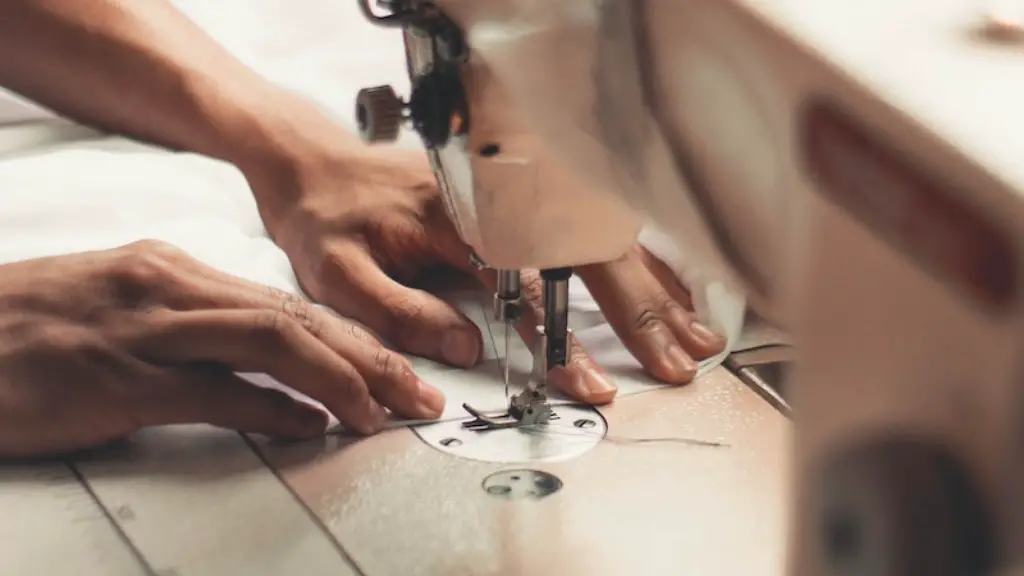The ability to proficiently use a sewing machine allows you to create beautiful garments, garments of your own design, and most importantly save yourself precious time and effort. Sewing beautiful seams and completing projects can be rewarding, and with the right tools, anyone can learn how to finish sewing on a machine with ease. First things first, it is important to purchase the right sewing machine for your projects. Different sewing machines support different fabrics, needle sizes, and thread, so choosing the right one can make a difference in the look and longevity of your pieces.
It is also important to become familiar with the basics of how to use a machine, like the correct thread tension, how to properly wind and insert the bobbin, and how to adjust the stitch length and width. If the thread is not tensioned properly, the thread may fray and the fabric may not feed through the machine in the right way. This can cause complications later on and may require additional repairs. Understanding the thread tension is essential and can make all the difference.
Once you understand the basics, it is time to get familiar with the correct techniques. As a beginner, it is best to start with straight or zig-zag stitching on a light-weight fabric. These basic seam techniques can easily be completed with a sewing machine, and once you have the basics down, it will be easier to develop your skills further. To ensure that the stitches are locked in the fabric, it is important to backstitch when starting and ending the seam.
For more intricate projects, such as top-stitching or sewing on applique, different presser feet are available. Certain presser feet are used for gathering, piping, or for edge stitching. If you’re unsure, consult your instruction manual for more details. Utilizing the right presser feet can save you time and help you get professional results.
It is also important to remember the importance of hemming your garments. Hemming is a crucial finishing step used to give your garment a neat, finished look. To correctly hem your clothes you should first measure out how much of the fabric should be folded up and stitched, and then you can use a sewing machine to finish the job. Different fabrics require different hemming techniques, so it might be a good idea to practice on scraps first.
Finally, keep in mind the importance of proper machine maintenance. Cleaning the machine is essential for accurate stitching and longer machine life. It is also important to oil your machine with the right lubricant and replace broken or worn-out parts. Always consult your instruction manual for specific instructions on machine upkeep.
Hand Sewing Finish
Hand sewing can be an alternative technique for certain types of fabric and garments. Hand sewing is necessary for certain hems and for french seams, which are considered more sophisticated than other seam finishes. To complete a french seam, the raw edges of the fabric should be encased inside the seam and stitched by hand. This can help the seam look professional and the fabric less prone to fraying over time.
Understanding Fabric Types
When working with a sewing machine, it is important to understand your fabrics. Cotton, linen, silk, and wool are all common fabrics used for sewing garments. Each fabric has its own qualities, so it is important to familiarize yourself with the different types of fabric and the recommended stitch length, width, and pressure chosen for it. Some fabrics may need to be pre-shrunk or treated with starch prior to sewing for a professional finish.
Choosing Threads and Needles
When selecting threads and needles for your project, opt for quality materials. This can make a difference in the look and feel of your garments. The thread must be strong enough to hold the stitches and the needle must be the right size for the fabric being used. A too small needle will pucker the fabric, while too large of one can cause unwanted holes. Also, keep in mind that certain threads and needles are better suited for heavier fabric, while some are better for finer fabrics.
Tailoring
The ability to tailor or alter your garments is useful when creating or altering clothing. Tailoring can be an efficient way to save money and serve as a creative outlet. Though tailoring can be done by hand, many of the advanced techniques use a sewing machine. When it comes to tailoring, it is best to practice on simple projects and then move on to more complex techniques.
Organizing Supplies
Having an organized work space can also save you time and frustration while creating. When sewing with a machine it is important to have all of your supplies in one spot and within arm’s reach when necessary. This can include scissors, pins, thread, and other gatherings for the project. This can help with accuracy and keep things neat and tidy.


